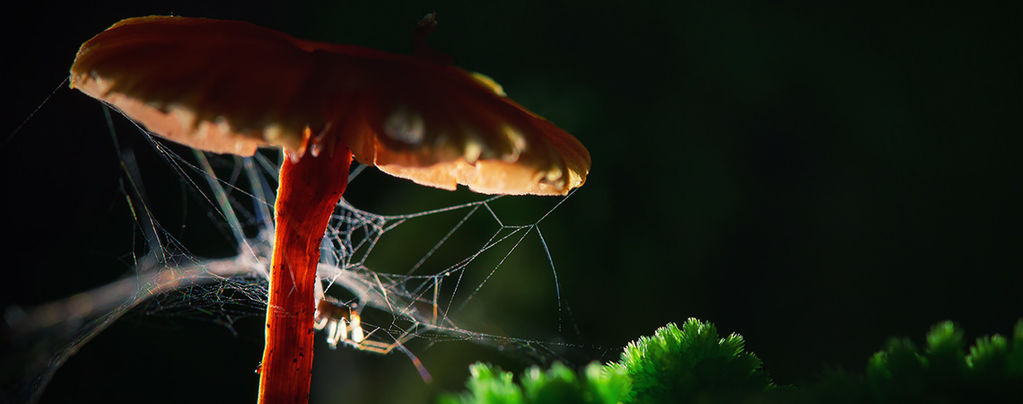
Spiders On Drugs: How Do Substances Affect Animals And Insects?
People are very familiar with the different ways drugs affect humans. Typically, cannabis chills you out, alcohol lowers inhibitions and sleeping pills knock you out. Here, we look at studies exploring how spiders are affected by drugs and why the research is important.
Most people are well aware of the effects that certain drugs have upon the behaviour and mannerisms of human beings. Alcohol makes people louder, more confident and even violent. Cannabis often chills people out, puts them in a creative mindset, deepens thought and sometimes causes a bit of paranoia. Caffeine is known to give a stimulating buzz that helps students and workers stay in the zone. This is all well and good, but have you ever wondered how these same drugs affect animals? Or more specifically, spiders?
As obscure as it seems, research has been conducted exploring the effects of certain drugs on the behaviour of spiders. Scientists observed how certain drugs encouraged spiders to construct their webs differently. Below, we provide some insight into how this study came about and what conclusions the researchers came to.
THE 1948 STUDIES
During 1948, a man by the name of Hans Peters conducted perhaps the first study involving the administration of drugs to spiders. Peters, who happened to be a zoologist, wanted to shoot a documentary that recorded spiders creating their webs. However, he came across a problem: the spiders seemed to make webs during undesirable hours of the day. In order to combat this pattern, Peters laced sugar water with certain drugs in hopes that it would alter the time of day the spiders created their webs.
Peters asked his colleague and pharmacologist Peter Witt to create the drug concoctions. Witt went on to add a variety of drugs to different amounts of sugar water, including cannabis, LSD, morphine, peyote, benzedrine and scopolamine. Despite the administration of such a diversity of drugs to different spiders, the critters still kept constructing their webs in the middle of the night, even while on a potentially hallucinogenic voyage.
However, it was found that the spiders wove different patterns into their webs depending on the type of drug they consumed. Intrigued by these findings, Witt decided to continue researching the subject, even including caffeine as a drug in future studies.
HOW WEBS ARE AFFECTED
After some time studying spiders, Witt decided to focus primarily on a type of garden spider that weaves orb webs. He found that caffeine caused spiders to weave a smaller web, while cannabis resulted in spiders being distracted and excluding the inner structures of their web. Scopolamine, on the other hand, caused spiders to lack direction. Small doses of LSD seemed to encourage spiders to continue making functional and well-designed webs. Witt’s findings basically concluded that different drugs do indeed affect spiders in diverse manners.
NASA RESEARCH
In 1995, NASA decided to mimic Witt's research. However, they took matters a step further, using computer technology to quantify the differences in web structure in order to identify levels of toxicity. Within these studies, spiders were given cannabis, sleeping pills, benzedrine and caffeine. European garden spiders were selected for the job.
The scientists discovered that the more toxic a substance, the more dysfunctional the web of the spider appeared. The cannabis formations were a little off, but still resembled a normal web. The benzedrine web was patchy, but not too bad. Webs weaved on caffeine and sleeping pills, however, were absolutely messy and chaotic.
-
 5 min
22 July 2017
Animals That Can Get Us High
You may know the tale of licking toads to get high, or have heard some other tales of animals making for a psychoactive good time. Now, before you go toad hunting or engaging in any behavior...
5 min
22 July 2017
Animals That Can Get Us High
You may know the tale of licking toads to get high, or have heard some other tales of animals making for a psychoactive good time. Now, before you go toad hunting or engaging in any behavior...
-
 4 min
7 February 2014
10 Animals That Love To Get High
Humans love to get high - and apparently animals as well. While we‘re alway busy enjoying and exploring new highs, many animals have become proficient stoners themselves.
4 min
7 February 2014
10 Animals That Love To Get High
Humans love to get high - and apparently animals as well. While we‘re alway busy enjoying and exploring new highs, many animals have become proficient stoners themselves.












 United States
United States










